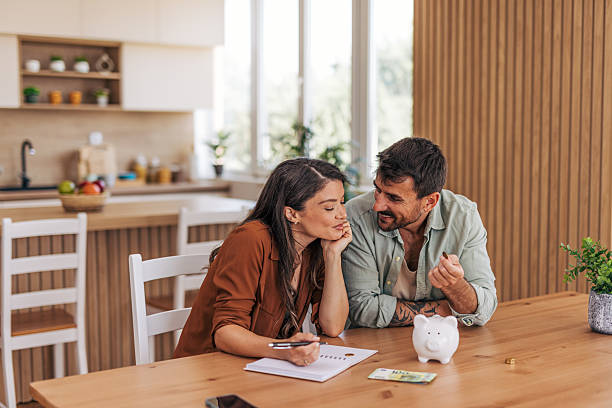Living with Generalized Anxiety Disorder (GAD) can feel like you’re constantly bracing for something bad to happen—even when things are going well. It can be an exhausting way to live, taking a toll on your mental and physical health, your goals and dreams, your lifestyle, and your relationships. But here’s the encouraging truth: it is absolutely possible to thrive and build emotional resilience, even with GAD. With the right tools and support, life with anxiety doesn’t have to mean a life controlled by fear.

What Is Generalized Anxiety Disorder (GAD)?
GAD is a mental health condition marked by excessive, persistent worry that feels difficult to control. Unlike everyday stress or occasional nervousness, GAD often impacts many areas of life—work, relationships, health, and the future—even when there’s no immediate threat. The people we see for Anxiety Therapy in Woodland Hills often relay that they thought their experience was the anxiety that we all experience from time to time, but they just weren’t “handling it right”. Or they weren’t aware at all that not everybody experiences generalized anxiety.
Common Signs and Symptoms of GAD
As an anxiety counselor in Woodland Hills, I know that people sometimes struggle to identify whether their symptoms are “serious enough”, or whether they “happen often enough”. The truth is that any of the signs and symptoms listed below can be intrusive into your life, even if some occur less frequently than others. You may also adjust to certain symptoms, like fatigue or restlessness, and not recognize their full impact.
- Chronic worrying about various topics (health, finances, relationships, etc.) without feeling like you ever “escape” those worries.
- Restlessness or feeling “on edge” a majority of the time.
- Difficulty concentrating or mind going blank; your mind is working overtime trying to manage your anxieties.
- Muscle tension, headaches, or stomach issues from the way stress manifests in the body.
- Irritability or feeling overwhelmed easily; your anxiety will keep you at a higher level of discomfort that lowers your tolerance of mishaps and problems.
- Fatigue, even after a full night’s sleep, from the overwork of trying to navigate persistent anxiety.
- Trouble falling or staying asleep due to restless thoughts, whether conscious or unconscious.
- Avoidance of situations due to fear or worry, even when in theory you’d like to attend.

How GAD Impacts Life
Generalized Anxiety Disorder can affect a person’s emotional well-being and daily functioning. You may find that you are trying to take care of your mental health, but GAD has a detrimental impact on your internal and external life.
- Relationships: Constant worry may lead to reassurance-seeking, conflict, or difficulty opening up.
- Work: Perfectionism, procrastination, or fear of making mistakes can create stress or burnout.
- Self-esteem: Living with anxiety can cause feelings of inadequacy, guilt, or shame.
2 Tools to Build Resilience and Thrive with GAD
1 – Focus on What You Can Control
When you experience consistent anxiety, you will often be battling worry, fear, or panic regarding what is coming around the bend. There are many things in this life that we cannot control. The key is to know which things we can control and learn how to utilize that to help us regulate our emotions.
- Get realistic about what you can and cannot control. While some worry about potential outcomes is irrational, the idea of control can have an impact on anxiety. If you believe that you can impact what happens, it is harder to release your worries. The fact is that some things are beyond your control and worrying about them will not make a bit of difference as to whether or not they occur. Make two columns: “What I can control” and “What I can’t control.” List anything and everything, no matter how obvious it may seem. For example, you cannot control the weather. You can control if you check the forecast and bring another layer if it’s meant to be colder than usual. You can’t control the actions of others. You can control whether you allow those actions in your life.
- Redirect your energy to what’s within your control—like your reactions, self-care, or setting boundaries. Again, this doesn’t guarantee that incidents won’t arise. Traffic can make your commute home from work longer than you would like. This might lead to you not having enough time to do everything you would want to do after work. Take control of the situation by determining what is not negotiable, such as eating dinner, setting your alarm for the next morning, etc.
- Be mindful of what you can control and how you choose to approach it. The practice of being realistic about what is in your control and putting that knowledge to work builds a sense of agency, which is a key part of emotional resilience. In our Woodland Hills Anxiety therapy sessions, we talk a lot about how to re-regulate when something beyond our control occurs, when we are surprised by a trigger, or when we feel our happiness is linked to something outside of our control. And it is good to have tools to use to tackle those issues. But a great, consistent practice that focuses on what you are able to take command of will build confidence and lay a foundation of being able to see the fruits of your labor. This means that when you are faced with inconvenient or upsetting events, you have a whole catalogue of past experience to call upon.
2 – Build a Calm Corner or Toolkit

There is a lot to be said for developing a system to help you become calm after a trigger, and also for reducing your overall anxiety through consistent behaviors. Building more calm in your everyday life is an ongoing practice that may involve rearranging your living area, collecting and storing specific items, and considering how to bring calm with you throughout your day.
- Take the guesswork out of your toolkit. Create a space or “go-to” list of calming activities: deep breathing, soothing music, grounding techniques, or a favorite book. Utilize it not only in times when your anxiety is triggered, but on a regular basis in order to reduce your overall stress. If you are using a space, stock it up with the things that help you feel calm. That way, you only have to go to that spot and reach for what is there. Similarly, if you make a list, you don’t have to stop and think of what might help you; you already have a collection of ideas ready for you. Your toolkit may have things that are meant to take time to use, such as the essentials for running a relaxing bath. It may contain “quick fixes” like a photo of something that always brings a smile to your face, your favorite comfy sweatshirt, or a song that puts you in a good mood. What you use to help yourself find peace will sometimes depend on how anxious you feel, how much time you have, and other factors.
- Keep sensory tools nearby—like essential oils, fidget tools, or soft textures—to bring yourself back to the present. When you feel your anxiety begin to mount, you will usually find that you begin ruminating on a past event or worrying about a yet-unknown outcome. This places your mind in either the past or the future, pulling your focus from the present. In order to remind yourself where you are, you can use your senses to take note of what is happening around you in real time. You may choose to touch, smell, or taste something, or focus on what you hear or see. When you feel aware of your current surroundings, you may find it easier to connect with your body through your breathing; anxiety can disempower you by making you feel disconnected and therefore out of control. Being present in your mind and body empowers you to take your next step in regulating yourself and resuming your day.
Key Takeaways

- Generalized Anxiety Disorder impacts people from all walks of life, but can be exacerbated by life events and circumstances, as well as coexistence with other mental health disorders.
- People who have GAD may have spent a lifetime struggling with their emotions, wondering why they couldn’t “just do” certain things that seemed to come easily to others. There may be a period of reflecting and unpacking once you have your diagnosis.
- There are tools you can utilize on your own and make part of your daily practice, and making that effort will alleviate some of your stress. But that doesn’t mean you’re on your own, or that you should expect yourself to figure it all out by yourself. You deserve support in dealing with GAD, whether you attend in-person or online anxiety therapy.
- The people around you may not struggle with anxiety, but they can still be part of your journey and help you to get through. Communicating with those you trust and sharing how they can support you goes a long way.
Anxiety Therapy at Embracing You Therapy
Do you often feel overwhelmed by constant worry or stress? Are you struggling to manage life transitions, maintain a healthy work-life balance, or set boundaries with others?
Through Anxiety Therapy in Woodland Hills, CA, you can learn practical tools like CBT and mindfulness strategies to help you regulate your emotions, shift unhelpful thought patterns, and build healthier behaviors that support your overall well-being.
Contact us today for your complimentary 20-minute phone consultation with our Admin Team today!



